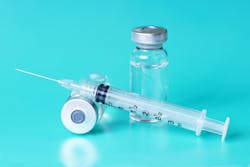JAMA study examines facilities’ low use of monthly injections for treating opioid addiction
Compared to taking a daily pill, a monthly dose of long-acting injectable (LAI) buprenorphine can be a simpler and more effective treatment for people with opioid use disorder. But do substance use treatment facilities in the United States take advantage of this highly effective medication?
To answer that question, researchers from the University of Chicago spent nearly a year analyzing data from the National Substance Use and Mental Health Services Survey. They found that only 32.6% of substance use treatment facilities that offered medications for opioid use disorder offered LAI buprenorphine to their patients. The researchers suggested that administrative obstacles make it more difficult — and often more expensive — to obtain LAI buprenorphine compared to the oral version of the medication.
The study, published in the Journal of the American Medical Association in January, also revealed that facilities offering primary care were more likely to offer LAI buprenorphine. The researchers hypothesized that the difference may be due to those facilities facing fewer regulatory and administrative hurdles to prescribe the medication as a monthly injection.





